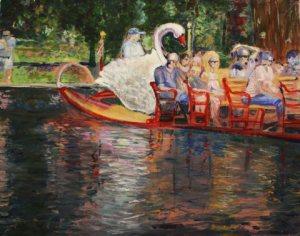
I’m a Bostonian. My first memories are of chasing pigeons and ducks in the Public Garden, and dropping coins to an organ-grinder from the balcony of our apartment on Charles Street. The Red Sox are my team. I do not follow any other team, or for that matter, any other sport.
Boston is world-famous. Watertown, on the other hand, was a quiet, working-class suburb, at least until this week. Yet Watertown also plays a central role in my family history. My father, a chemical engineer, worked his entire career for a water treatment company in Watertown. For my first summer job, I rose before dawn with him every morning, and ate breakfast at a diner in Watertown alongside contractors, plumbers and electricians. At the plant, I worked alongside local Armenian-Americans and Portuguese-Americans. At lunchtime, I would go out to explore the nearby shops in search of lahmejune, the addictive Armenian flatbread pizzas.
So last week, with the rest of the world, I watched coverage of the bombing of the Marathon, and then the gun battle, and then the Watertown manhunt, in a state of shock. It was surreal to see so much media attention trained on the humble and familiar streets of Watertown.
But even before the drama of the chase and capture of the second suspect, the residents of Boston, and people across the country, were organizing interfaith services and vigils in churches and temples. I cannot help myself: I see the world through an interfaith lens. And what struck me in the wake of the tragedy in Newtown, and in Boston, is that we crave connection across the lines of religion, in the form of interfaith services. Our primal urge in times of crisis is to reaffirm our shared humanity, our ability to see beyond our differences, our desire to join hands across religious boundaries.
Twenty years ago, these services might have been ecumenical or interdenominational–interchurch rather than interfaith–still embedded in the subtext of a Christian America. Now, we reach out to the growing Muslim, Hindu, Buddhist populations. The tent continues to expand: when the secular humanists felt excluded this week, they spoke out, wanting to grieve with the rest of the Boston community.
We do not need to share a conception of God in order to comfort each other. No matter our religious beliefs or lack thereof, we can still pause to sing together, meditate together, hug each other.
I write as someone who chooses to live fulltime in this “interfaith space.” Interfaith families raising children with dual-faith education experience the benefits of interfaith celebration and contemplation and mourning–the synergy, the joy, the healing of reflecting together as an interfaith community–week in and week out. And as we model interfaith love, and radical inclusivity, we hope to play some small part in preventing intolerance, alienation and violence in the world.

